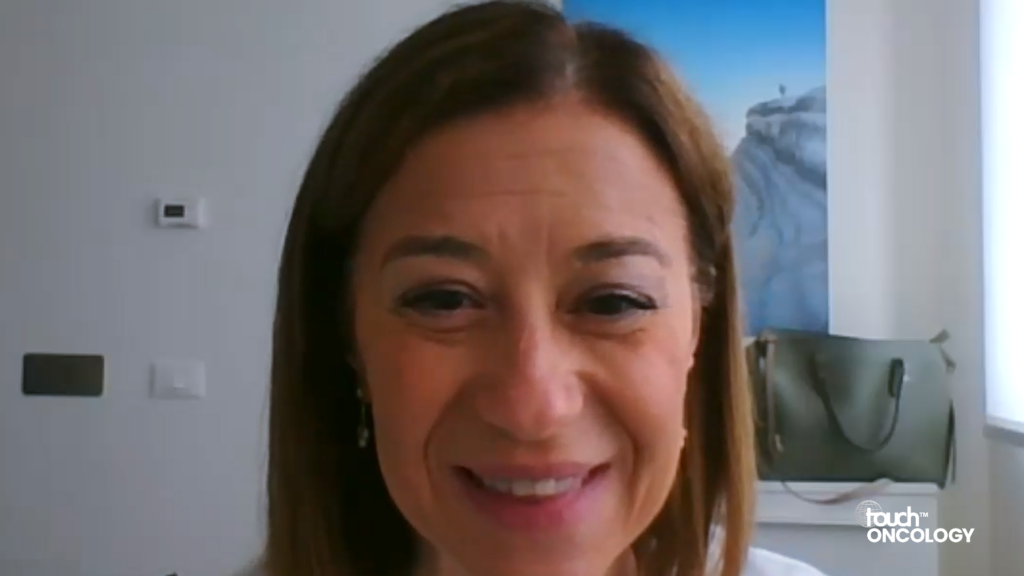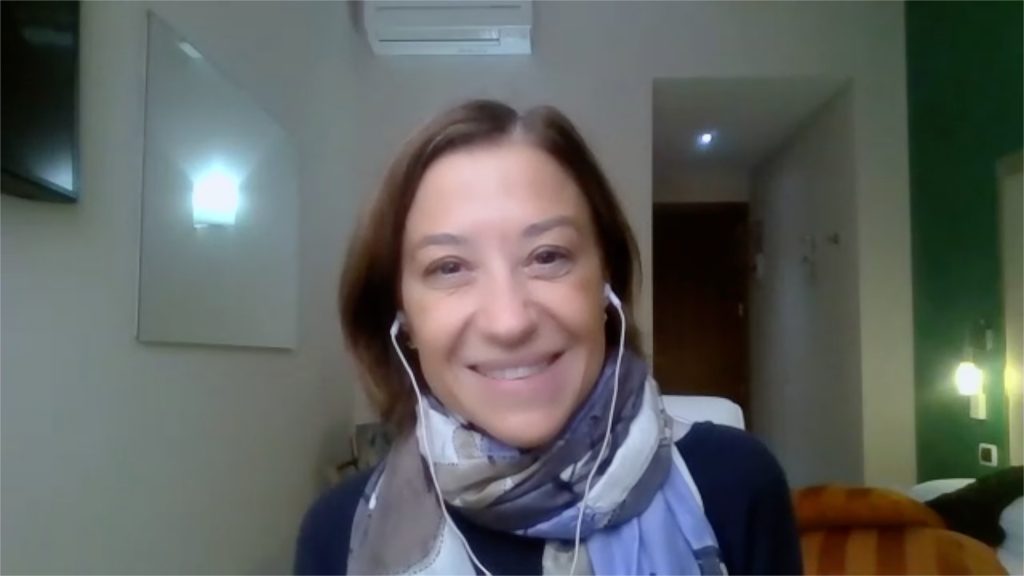
The annual European Society of Gynaecological Oncology (ESGO) Congress, held from 7–10 March 2024, in Barcelona, Spain, celebrated its 25th anniversary this year. This year’s congress brought together over 2,500 participants from all over the world, and featured groundbreaking research, clinical advancements and professional development opportunities.
As with every year, the ESGO Congress covered a wide array of topics in gynaecological oncology, including cervical, ovarian and endometrial cancers. Key data presented at the congress not only highlighted significant advancements in these areas but also provided insights that could shape future clinical practices.
Cervical cancer
One of the standout presentations was the final survival data from the international, multicentre, prospective SENTIX trial (Sentinel Lymph Node Biopsy in Patients With Early Stages Cervical Cancer; ClinicalTrials.gov identifier: NCT02494063).1,2 Across 47 sites in 18 countries, 594 patients with early-stage cervical cancer were enrolled who underwent sentinel lymph node (SLN) biopsy. Prof. David Cibula reported a 2-year disease-free survival of 93% and overall survival of 98%. The authors concluded that survival of patients after SLN biopsy was excellent and comparable to patients after pelvic lymph node dissection in other recent prospective trials. The potential impact on clinical practice includes a shift towards SLN biopsy as an effective method for staging early-stage cervical cancer, potentially reducing the need for more extensive lymphadenectomy procedures.
Endometrial cancer
The phase II COPELIA trial (ClinicalTrials.gov identifier: NCT03570437) explored the efficacy of cediranib combined with weekly paclitaxel or olaparib versus weekly paclitaxel alone for advanced or recurrent endometrial cancer after one prior line of platinum-based chemotherapy.3,4 In this analysis of 116 evaluable patients, 3-month progression-free survival (PFS) was 51.3% with paclitaxel (PaW), 52.6% with paclitaxel plus cediranib (PaC) and 76.9% with cediranib plus olaparib (OC) (p=0.02 for PaC versus PaW). Response rates were 28.2% for PaW, 23.1% for OC and 56.4% for PaC (p<0.001 for PaC versus PaW).5 These findings suggest that adding cediranib to weekly paclitaxel improves outcomes in patients with advanced/recurrent endometrial cancer previously treated with platinum. Presenting author Dr Andrew Clamp concluded that vascular endothelial growth factor receptor tyrosine kinase inhibitors in combination with paclitaxel are worthy of further evaluation in previously treated advanced or recurrent endometrial cancer. He also noted that a translational research programme is ongoing to further refine those patients who may benefit from treatment with cediranib.
Another interesting presentation at this year’s meeting was the primary results of the phase III ENGOT-en9/LEAP-001 (ClinicalTrials.gov identifier: NCT03884101) trial, a randomized, open-label, trial comparing first-line lenvatinib plus pembrolizumab to chemotherapy in patients with advanced or recurrent endometrial cancer. 5,6 Prof. Christian Marth reported that in 842 patients, after a median follow-up of 38.4 months, OS was not statistically significant for non-inferiority of lenvatinib plus pembrolizumab versus chemotherapy in the patients who were mismatch repair proficient (hazard ratio, 1.02 [95% confidence interval, 0.83–1.26]; non-inferiority p=0.2459875).
Ovarian cancer
Managing side effects associated with antibody–drug conjugate (ADC) therapy in patients with ovarian cancer is a key issue, and a topic that was highlighted at the congress. The MIRASOL trial (ClinicalTrials.gov identifier: NCT04209855) drew significant attention again this year, with a focus on health-related quality of life.7,8 The MIRASOL trial evaluated the use of the ADC mirvetuximab soravtansine compared with investigator-selected chemotherapy in patients with folate receptor alpha (FRα)-high platinum-resistant ovarian cancer. In 453 patients who had received 1–3 prior lines of therapy, global health status (GHS), physical functioning (PF), role functioning (RF) and fatigue symptom (FS) subscales were collected. Across all subscales, a higher proportion of patients treated with mirvetuximab soravtansine showed improvement at week 8/9 versus investigator’s choice of chemotherapy. The difference was statistically significant for GHS (p=0.0023), RF (p=0.0386) and FS (p=0.0038) scales.8 The authors concluded that the previously reported efficacy and safety data for mirvetuximab soravtansine is supported by patient-reported outcome data from the MIRASOL trial. Based on data from the MIRASOL trial, the US Food and Drug Administration (FDA) has subsequently approved mirvetuximab soravtansine for FRα+ platinum-resistant ovarian cancer.9
The single-arm phase II UPLIFT trial (ClinicalTrials.gov identifier: NCT03319628) assessed upifitamab rilsodotin, another ADC, in patients with NaPi2b-positive platinum-resistant ovarian cancer.10,11 Of 268 patients enrolled, 141 were NaPi2b positive. In this patient population, confirmed overall response rate was 15.6%; this was 13.1% in the overall patient population. The authors deemed that this trial did not show meaningful improvement versus historical single-agent chemotherapy.
Elsewhere in the ovarian cancer space, results from a study assessing the for detecting homologous recombination deficiency (HRD) in patients with ovarian cancer were reported. The test was developed as an alternative approach to predict benefit of Leuven poly-ADP ribose polymerase inhibitors (PARPi). It was compared with the Myriad myChoice CDxPLUS test in a training and validation cohort of the PAOLA-1 trial and was found to be an improved approach to detect benefit of PARPi in patients with ovarian cancer, suggesting a better predictive value compared with the Myriad test.2
Clinical guidelines
New clinical guidelines were presented including the ESGO-EOTTD-ISSTD-GCIG Gestational Trophoblastic Disease (GTD) guidelines in a highly informative case-based session. Despite the success of specialized centres, many countries lack consistent guidance. A panel of experts drew on the previous EOTTD guidelines published in 202013 and developed inclusive guidelines with a global focus. The new guidance provides a series of definitions and a broad outline for what the minimum requirements should be for a specialist GTD centre.14
Another excellent session was the presentation of the new ESGO-EURACAN-GCIG uterine sarcoma guidelines. Due to the rarity of uterine sarcoma, there is little level-1 evidence to support recommendations. A panel of experts drew on retrospective analyses, case series and expert opinion to develop recommendations from diagnosis to follow-up in the relapsed setting. 15
Disclosures: This short article was prepared by the touchONCOLOGY editorial team. No funding was received in the development and publication of this article.
References
- ClinicalTrials.gov. Sentinel Lymph Node Biopsy in Patients With Early Stages Cervical Cancer (SENTIX). ClinicalTrials.gov Identifier: NCT02494063. Available at: https://www.clinicaltrials.gov/study/NCT02494063 (accessed 13 June 2024).
- Cibula D, Marnitz S, Klát J, et al. 444 Survival of patients with early stages cervical cancer after SLN biopsy without systematic pelvic lymphadenectomy: survival outcomes of the SENTIX prospective single-arm international trial (CEEGOG CX-01; ENGOT-CX2). Int J Gynecol Cancer. 2024;34:A7–8.
- ClinicalTrials.gov. Does Cediranib With Paclitaxel, or Cediranib and Olaparib, Treat Advanced Endometrial Cancer Better Than Paclitaxel? (COPELIA). ClinicalTrials.gov Identifier: NCT03570437. Available at: https://clinicaltrials.gov/study/NCT03570437 (accessed 18 June 2024).
- Clamp AR, Porter C, White A, et al. 407 COPELIA: a 3-arm randomised phase II trial of weekly paclitaxel with or without cediranib or olaparib with cediranib in recurrent endometrial cancer. Int J Gynecol Cancer.2024;34:A17–8.
- ClinicalTrials.gov. Pembrolizumab (MK-3475) Plus Lenvatinib (E7080/MK-7902) Versus Chemotherapy for Endometrial Carcinoma (ENGOT-en9 / MK-7902-001) (LEAP-001). ClinicalTrials.gov Identifier: NCT03884101. Available at: https://clinicaltrials.gov/study/NCT03884101 (accessed 18 June 2024).
- Marth C, Moore RG, Bidzinski M, et al. 88 Lenvatinib plus pembrolizumab versus chemotherapy as first-line therapy for advanced or recurrent endometrial cancer: primary results of the phase 3 ENGOT-en9/LEAP-001 study. Int J Gynecol Cancer. 2024;34:A570–1.
- ClinicalTrials.gov. A Study of Mirvetuximab Soravtansine vs. Investigator’s Choice of Chemotherapy in Platinum-Resistant, Advanced High-Grade Epithelial Ovarian, Primary Peritoneal, or Fallopian Tube Cancers With High Folate Receptor-Alpha Expression (MIRASOL). ClinicalTrials.gov Identifier: NCT04209855. Available at: https://classic.clinicaltrials.gov/ct2/show/NCT04209855 (accessed 18 June 2024).
- Garcia YG, Gorp TV, Konecny GE, et al. 360 Health-related quality of life in patients with FRα positive platinum-resistant ovarian cancer treated with mirvetuximab soravtansine vs. investigator’s choice chemotherapy: analysis from the phase 3 MIRASOL trial. Int J Gynecol Cancer. 2024;34:A34–5.
- Rosa K. FDA Grants Full Approval to Mirvetuximab Soravtansine for FRα+ Platinum-Resistant Ovarian Cancer. OncLive. 22 March 2024. Available at: https://www.onclive.com/view/fda-approves-mirvetuximab-soravtansine-for-fr-platinum-resistant-ovarian-cancer (accessed 19 June 2024).
- ClinicalTrials.gov. First-in-Human Study of XMT-1536 in Cancers Likely to Express NaPi2b. ClinicalTrials.gov Identifier: NCT03319628. Available at: https://clinicaltrials.gov/study/NCT03319628 (accessed 19 June 2024).
- Concin N, Hays JL, Fidalgo AP, et al. 168 UPLIFT (ENGOT-Ov67/GOG-3048): Results from the phase 2 trial of upifitamab rilsodotin (UpRi; XMT-1536), a NaPi2b-directed dolaflexin antibody-drug conjugate (ADC) in platinum-resistant ovarian cancer (PROC). Int J Gynecol Cancer. 2024;34:A573–4.
- Loverix L, Vergote I, Busschaert P, et al. 569 The Leuven PARPi benefit test as improved approach for prediction of PARPi benefit in the PAOLA-1/ENGOTov25 trial. Int J Gynecol Cancer.2024;34:A43–4.
- Lok C, van Trommel N, Massuger L, et al. Practical clinical guidelines of the EOTTD for treatment and referral of gestational trophoblastic disease. Eur J Cancer. 2020:130:228–40.
- Seckl M, Lok CR, Braicu EI. ESGO-EOTTD-ISSTD-GCIG Gestational Trophoblastic Disease Guidelines. Presented at the 25th European Congress on Gynaecological Oncology. 1–10 March 2024. Barcelona, Spain.
- Ray-Coquard I, Casali P, Friedlander M. ESGO-EURACAN-GCIG Uterine Sarcomas Guidelines. Presented at the 25th European Congress on Gynaecological Oncology. 1–10 March 2024. Barcelona, Spain.










